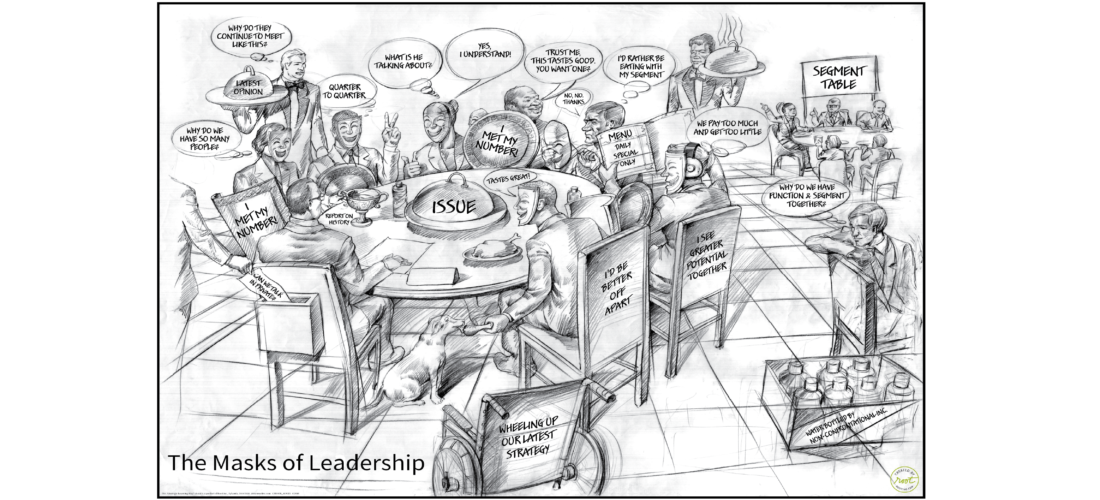Change is not typically a word that excites people. Yet, change is a must for organizations that want to keep pace with an evolving marketplace. So, how can leaders manage change successfully when their people are not always excited to execute?
The most effective way to change our organizations and achieve better results is to alter the approach we take—including the types of conversations we have, the behaviors we model and the processes for getting things done. When we do that, we set the wheels in motion for executing new strategies successfully.
Nine Steps to Manage Change Successfully in Your Organization
Embracing change is a requirement for growth. In business, as in life, this means stepping outside our comfort zones to get to new heights. Bridging the gap between the need for change and employee acceptance of and adherence to that change is one of the hardest things to do. Here are some steps you can take to successfully manage change in your organization.
1. Follow a process
Organizations that are most successful in implementing change know where they are and where they want to go and they are willing to follow a well-defined process to help them get there. The playbook for change is just as important as the talent to execute.
What to do: Find a proven process that you believe will work for your organization and the nature of the change. Be sure it considers the roles of your leaders, managers and individual contributors. The best change processes include rigor on alignment, implementation and sustainment.
2. Start with the executives
If you don’t have total alignment, clarity and conviction at the executive level, your employees will know. And this will hinder acceptance—or more likely—keep your change efforts from being successful. We often find that change efforts are an intellectual activity for executives and an emotional one for everyone else. While the executive team is driving the change, they may or may not be impacted by it personally. But your people will be. They need to know the executive team is clear, aligned and personally committed to the change. In short, the executives must become the change that they want to see in others.
In fact, when managers and employees on the frontline are asked about their confidence in a new strategy, they often respond with the same comments. The comments are that the strategy is not the problem; rather, it’s the fundamental uncertainty and disbelief that leaders will change their behaviors to bring it to life. Leaders must be transparent with their own behavioral change to set the pace for the rest of the organization.
What to do: 54% of executives do not believe their company’s strategy will lead to success. What this statistic tells us is that even executives are not always committed to the change. To avoid this, engage leaders and align them on their view of the business’ current situation, identify the barriers to success, define a shared view of the future direction to create strong conviction and consider the role of culture change in driving strategic success across the organization. Alignment is about creating so much clarity that there is little room for confusion, disorder, infighting and other distractions. It enables unprecedented accountability and leadership rigor that can’t help but drive successful change management.
3. Consider the needs and perceptions of all stakeholders in the change process
Whether this is done by completing stakeholder-specific plans or simply contemplating the thoughts and considerations of leaders, managers, individuals and customers, seeing the change through the eyes of stakeholders is valuable for preparation and planning.
What to do: At a minimum, the perspectives of employees, managers, customers and partners should be considered before completing the overall plan. Fully thinking through how the change impacts everyone across the business enables better engagement because there is clarity around the outcomes needed by each group.
4. Pay attention to the individual change process.
Every individual goes through his or her own personal process during a transition. This personal transition process usually involves three phases:
Letting Go: Every transition begins with an ending or a loss. When things change, people leave behind the way things were in the previous situation. This is hard for people to do.
Exploration: Also called the neutral zone, this is a potentially confusing and frustrating time between the old way and the new.
Acceptance: Acceptance can only happen after people have let go of the past and have spent some time exploring the future. In this phase, people let go of the past and start to identify with their new destination.
Executives leading change—who are personally impacted by the change—experience this same change process. Often leaders are uncomfortable exposing their own vulnerabilities regarding change with their people. However, nothing is more powerful in leading change than to see a leader personally committed to changing his/her own behaviors and sharing personal change experiences.
What to do: It’s important for leaders and managers to respect the fact that people will lose something—perhaps something as significant as their job title or responsibilities. Showing empathy to this fact through communications, town hall meetings or one-on-one conversations goes a long way. Make sure people understand the new rules of the road—what they need to do differently in their processes, behaviors, roles and responsibilities. It’s equally important to ensure managers are prepared to lead people through this transition and can provide the right level of clarity where needed. People will get to the final transition at different points. It will be important to offer several opportunities for people to learn and discuss. It can’t be a “one-and-done” approach.
5. Focus on managers
Managers are critical to keeping employees engaged and productive and can be instrumental in helping leaders manage change. Managers are also, unfortunately, the most overlooked group in an organization when it comes to developing the skills that make the difference between change failure and success. These include communicating, interpersonal skills, team building and coaching. If managers can’t operationalize the desired changes, then the total investment and effort will be sub-optimized. Managers must understand the strategy and then translate it in a way that is relevant for each employee.
What to do: Every manager should receive the tools and knowledge to truly understand the business, including what changes are needed and why. They need to know their role and many need to up their game in working with people, especially in times of change. They must be able to connect their teams to the business to help them understand the “why” and “how” of their job. Finally, they need to understand how their team delivers results and how it affects the strategic outcomes the organization is driving toward.
6. Effectively handle resistance
Resistance is a natural part of the change process; it is impossible to avoid it entirely and better to embrace it. Each time you allow resistance to have a voice in the room, you minimize its voice outside the room. Let people know it is okay to struggle with change, but the “struggle” needs to be timebound. Help create forums for people to challenge the change, discuss the change and then be engaged in the solutions for successful changes they can make in their roles.
What to do: Set the expectation that resistance is a normal part of change; that it is actually expected. Being really curious about resistance and how to honor it will help you create even stronger plans for executing on strategic change. It’s important as a leadership team to be thoughtful about specific plans (see #2), defining clear measures, piloting and testing the concepts with certain parts of the organization, proving those successes and then sharing those successes before moving forward. It’s a slower road, but it has proven to be much more effective in implementing change.
7. Celebrate early wins.
As the change takes hold, you will have some successes you’ll want to replicate quickly (both at an organizational and individual level). To do that, capture those successes and communicate them broadly.
What to do: Convert the early wins, no matter how small, into success stories people can understand. These stories let people know what you want more of in the organization and allow others to reflect on whether they could do anything similar. These stories also reinforce that small contributions really do matter.
8. Sustain the dialogue.
Dialogue is the oxygen of change. Creating methods to enable ongoing dialogue at all levels of the business demonstrates a commitment to the change that is authentic and healthy. This brings greater clarity to what is working and what isn’t working. However, those conversations need to be continued and reinforced.
What to do: Potential ways to sustain important conversations and help manage change for the long-term include town hall forums or manager meetings. Focus on asking questions such as “What is going well?” and “What needs do you have that we haven’t thought of?” Alternatively, if it works with your business model and company culture, some organizations set up an online forum for people to share ideas and questions.
9. Be clear on the metrics for success.
Success should not be fuzzy. When your people understand the size of the prize and how their contributions matter, they are more motivated to achieve the desired results. Everyone should be visualizing the same thing, and they should be in lockstep on how to achieve it.
What to do: As part of your sustainment activities, you should regularly report on organizational progress toward the defined targets. It’s also critical to make those targets clear during the rollout of the changes and new strategy.
And There You Go! Nine Tactics on How to Manage Change Successfully
In general, very few people choose an uncomfortable change for themselves, unless the pressure of not changing is meaningful. Strategic change can create anxiety and fear. It challenges people’s confidence. But, it is a necessity for many organizations that want to grow and be a market leader. Following a process and leveraging some of these suggested steps could make a huge impact on how well the business does at executing strategic change.









